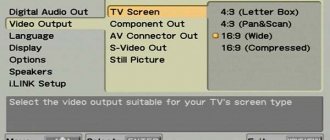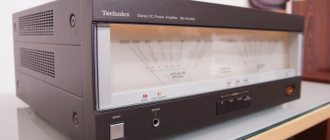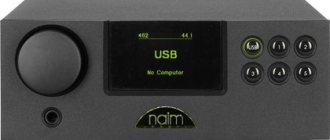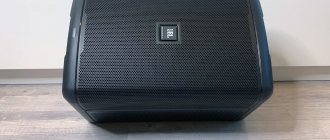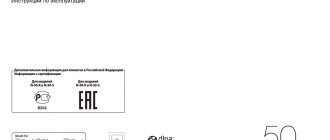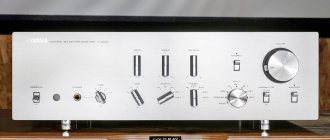Single support tonearm HADCOCK GH…
Single support tonearm hadcock gh 242 (UK)
- Image
- Text
Single support tonearm HADCOCK GH 242 (UK)
Package Contents
Tonearm tube with shell and central part; base assembled with elevator mechanism; phono cable with ground bus; counterweight; anti-skating load; fully assembled anti-skating mechanism; 3 assembly keys; cartridge mounting screws; 2 installation templates.
INSTALLATION
Base
Use template A to determine the drilling point for the mounting hole (22), checking all options for free movement of the tonearm. Drill a 16mm hole in the turntable table. If the supplied phono cable is equipped with BULLET PHONO PLUGS, the hole should be 19 mm. The washer (25) and nut (24) are secured with the wrench included in the kit so that the height of the main support (21) can be adjusted. Install the flange (22) so that the fixing screw (29) allows you to adjust the height of the central support.
Assembling the anti-skating mechanism
Loosen the screw (15) and install the mechanism wheel (14), then screw it back to the main support (21).
Installing the cartridge into the shell
Loosen the screw (5) in the shell (1). You can remove the shell for easy installation of the cartridge. Don't forget to put the needle safety on. Select the correct length of screws and secure the cartridge.
Installing a shell on a handset
Secure the shell with screw (5). Carefully connect the cables according to the following pattern: red - right signal, white - left signal, green - right ground, black/blue - left ground.
Installation of weights
Install the main (11) and additional weights (7) on the rear part of the tube, as shown in Fig. 1.
comparison of direct and S-tonearms: is the latter really so frankly better?, to clarify points
Well, this is no pro, I heard something somewhere (while doing DJing)
// The blue dotted line shows the trajectory of the head during playback // - look at the picture, it’s also complete nonsense.
//In the case when the hole in the center of the record disk rests on the spindle and does not allow the record to be moved any more, and the eccentricity is still not compensated, it is necessary to widen the hole. To do this, remove the record from the player, holding it by the sides (but in no case by the surface!), carefully cut out a little plastic with a scalpel from the inside of the hole in the direction where the spindle rested, preventing the record from moving./ /
Well, it’s clear with my friend, Alexey, what did you see in him??
| Quote |
| The Apostle writes: You are holding the wrong thing in your hands, Paul; removable tubes are a completely different matter. |
I M E N N O is not another topic. Because just with removable tubes, at least some kind of adequate comparison here and there, since we have the same tonearm model. Otherwise, different tonearms, and the shape of the tube protrudes in front of the locomotive.
| Quote |
| The Apostle writes: here you are, gentlemen. A more literate article by Leonid Antonov |
It is this article that makes me sick, seeing how Comrade. Antonov drew a straight tonearm with a non-removable headshell.
| Quote |
| Vyacheslav Vinilov writes: S is no worse with some reservations, but it is several times more convenient. But this is until you take a normal head. Full pi. Sa believed me. I can demonstrate if you have time. |
Full pi. until you lift a normal tonearm under a normal head, without getting hung up on the shape of the tube. To quote the Apostle, there is no need to make fools out of Engineers.
PS. All vinyl reproduction is full of caveats and compromises.
Vladimir, did you read the title of the article? It doesn’t seem to be called the Vinyl Lover’s Bible, and the magazine, unlike Internet resources, is not rubber.
| Quote |
| The Apostle writes: Vladimir, did you read the title of the article? It doesn’t seem to be called the Vinyl Lover’s Bible, and the magazine, unlike Internet resources, is not rubber. |
It wouldn't be a shame to give such links. Likhnitsky also had the impudence to compare him to this DJ idiot..
| Quote |
| Vladimir Staroverov writes: It is pathologists who see with their own eyes. |
They can see, but they don’t make any sense. Everyone is strong with hindsight. We need to think about the living, not the dead.
| Quote |
| Eduard Egorov writes: Apparently, with more curves this resonant frequency is lower. |
At a glance, we can assume that: A direct tonearm has one section of resonance with multiple frequencies decreasing in amplitude.
A curved tonearm, due to its greater length, has a longer resonance wavelength and a correspondingly lower frequency of the main resonance, plus the curvature adds its own resonances determined by the shape, and even if the attenuation coefficient in the material of the straight and curved tonearms is the same, then the resonances of the curved one are smaller in amplitude and more spread out across the spectrum .
| Quote |
| Alexey Alekseev writes: And why was it necessary to provide a link to it? |
Source
Assembling the tonearm The tube and the central part of the tonearm are now...
Page 2
- Image
- Text
Tonearm assembly
The tube and center section of the tonearm should now be placed on the base, placing the center (3) on the base needle (20) of the main support. Loosen the screw (17) and fit the tonearm tube (2) with the central part (3) as shown in the figure. So that the cable outputs coincide with the red signal pad (31). Make sure that after connecting the cable you are facing towards the drive.
Shell setup
Install the ALIGNMENT PROTRACTOR template onto the turntable spindle. Loosen the screw (5) and install the cartridge so that it is parallel to the lines at points A and B. Also, check the uniform level of the upper plane of the shell and the central part of the tonearm (3).
Setting the tonearm level
Loosen the screw (29) on the flange (22) and raise or lower the center support until the tonearm tube is parallel to the record on the turntable. You can also adjust the manufacturer’s recommended VTA of the cartridge.
Setting up anti-skating
Place the loop of the weight thread between the two plastic stoppers of the anti-skate rod (19). The pulley (16) must be installed so that the thread is parallel to the tonearm tube in playback mode (Figure 3). Initially install the stoppers somewhere in the middle of the anti-skate rod. Determine the final position using the Hi-Fi News Test Record. Set the main (11) and additional (7) weights according to the recommended clamping force. Use an accurate scale. The azimuth (the angle of rotation of the shell) can be adjusted by turning the main weight (11).
Final assembly of the product
Secure the tonearm support pad (9) with enough space for the needle to touch the surface of the record.
Mounting Hole: 15.87mm (5/8″) Overall Length: 304.8mm (12.0″)
Height: 43.0mm - 90.0mm (1.7″ - 3.5″) Base Length: 86.4mm (3.4″) Effective Length: 243.8mm (9.60″) Spindle Center Distance: 226.0mm (8.9″) Needle Lead Angle: 23 degrees
Spindle lead: 62mm (2.4″) Cartridge mount: 12.7mm (0.50″) Cartridge weight: 3 – 12 grms
Comments
Select → I found the instructions for my acoustics here! #manualza
- Click →
I bought a new drug at the pharmacy for weight loss. I open it, and it’s empty and only instructions for use, two words: “Don’t eat!”
Manualza!manualza.ru
Still not with us?
How to choose a vinyl player? Added: Nov 20, 2022
Although digital music playback devices are convenient to use, the production of vinyl record players has never stopped. And today, the popularity of records is only increasing. Artists are again releasing singles and albums on vinyl, in parallel with CDs and electronic releases, which allows them to attract not only a young audience, but also experienced audiophiles.
And if you are also thinking about buying a vinyl player, but don't know how to choose one, this guide is for you!
Why do people value vinyl so much?
- Warmth and spaciousness of sound. As they say, “vinyl sound can not only be heard, but also felt.”
- Effect of mechanics on sound: the process of reading tracks causes vibrations in the sound of the tracks. This may be confusing for digital lovers, but is a boon for vinyl lovers.
- The process of preparing and launching the record. Caring for your turntable and records, according to music lovers, has its own charm.
- The passion of a collector in searching and selecting records. Interesting specimens can be found both in new condition and at flea markets.
But vinyl players also have disadvantages:
- Firstly, this is the high cost of the player itself, records and repairs
- Difficult and long-term care for devices and vinyls.
- A high-quality acoustic system and additional devices (phono stage, amplifier, etc.) are required.
Vinyl turntable design
A standard record player consists of the following components:
- The base (also known as the body or chassis of the player) on which the drive, platter, and pickup are installed;
- Platter – a rotating disk on which the record is located;
- The pickup is the most important part of the player, on which the quality of music reproduction depends. The cartridge consists of 4 components: stylus, cartridge, cartridge head and tonearm.*
- A counterweight is a weight that is fixed to the tonearm and allows you to adjust the clamping force of the stylus.
- Control elements – start/stop buttons, rotation speed, etc.
- Cover - in some models it can be used not only to protect against dust, but also to install a record sleeve.
*In some sources, the pickup is a head with a cartridge and a stylus, and the tonearm is an independent element of the player.
What to look for when choosing a player?
Weight and material
The weight of the player directly depends on the material from which the body and platter are made. We can say that the heavier the player, the better: it is more stable and protected from damage. The highest quality ones are with a metal base, plastic ones are worse. But there are other options: MDF, acrylic, carbon or even granite. The price also directly depends on the material; the more expensive it is, the higher the cost of the player.
type of drive
There are 2 main types of drives: direct drive and belt drive. In direct drive, the support disk is located on the motor rotor, which allows you to almost immediately accelerate the disk to the desired speed. But some people believe that using a player with this type of drive somewhat pollutes the sound due to the overlapping sound of the motor. In a belt drive, the motor is located outside the disk area, which is spun using a belt: rubber or synthetic interspersed with various threads. It picks up speed more slowly, but gives a cleaner sound, without additional vibrations. The belt drive is suitable for audiophiles, but is not suitable for DJs who need a drive with fast braking and acceleration.
Audio-Technica AT-LP120 USB Direct Drive
Turntable
Pickup
As noted above, a pickup consists of 3 components, each of which is important for high-quality sound reproduction. A high-end turntable should support stylus and cartridge replacement. An important nuance: they are not always interchangeable. Not all styli, cartridges and headshells fit every player, think about the components in advance.
Cartridges for vinyl players
Cartridge sizes are 1/2 inch or T4P, it’s hard to say which one is better. We can only say that using T4P will make life much easier, since they are easy to change. To do this, you do not need to make any adjustments, but just fix one screw. T4P standard cartridges have the same weight (6 grams), the same needle offset (15 mm), and the same clamping force (1.25 g).
In contrast, 1/2" cartridges have very different geometries, weights, and clamping force requirements. After installing the cartridge on the player, it must be configured correctly, and this will not be easy for a beginner to cope with.
Numark GrooveTool
Cartridge
According to the principle of operation , all current cartridges today are divided into 2 types MM (moving magnet / moving magnet) and MC (moving coil / moving coil). In MM, the pickup stylus is mechanically connected to a magnet. The vibrations of the needle are transmitted to a magnet, which moves next to the stationary coils and creates an alternating current in them. MM cartridges are usually cheaper and come with replaceable needles. The cost ranges from 25 to 50% of the cost of the entire cartridge.
The principle of operation of MC cartridges is reverse: the magnet is stationary, and the coils are part of the moving system. Many audiophiles prefer MC heads due to their softer, more detailed sound reproduction. Most of these heads, as a rule, do not support needle replacement, so you will have to change the entire cartridge. It is worth noting that the concept of better sound quality of MC heads is relative: a top-end MM version will sound better than a budget MC.
Tonearm
Tonearms are either radial or tangential.
Radial tonearms are fixed at one point on the player body and accordingly move along a certain radius. There are straight , S-shaped and J-shaped radial tonearms. Straight ones usually have less weight and are therefore better compatible with entry-level cartridges. S-shaped ones have a high or medium weight and are better suited for rigid cartridges that require high tracking force. For beginners, a straight tonearm is more suitable, since its lightness increases the service life of the stylus.
| Sony PS-HX500 straight arm turntable | Turntable with S-shaped tonearm Audio-Technica AT-LP120XUSB-BK |
The tangential tonearm moves next to the record on special “runners”. They are more expensive and less common on sale.
Needles
Budget needles for vinyl players are made of corundum. For more expensive pickups, the stylus is made of diamond, but there are also styli made of rubies and sapphires. Gemstones are polished to give the needles a specific shape. The following types of needles are distinguished:
- Spherical (conical) needles have the largest transverse radius and at the same time the smallest contact area with the track. They produce a smooth but dull sound that lacks detail in the mid and high frequencies.
These types of needles are most often included with vinyl record players.
- Elliptical needles read much more information due to their shape. They transmit a fairly wide range of frequencies and allow you to play sounds louder. The downside is the severe wear of the plates themselves.
- Hyperelliptical needles are an improved version of elliptical needles. They have an increased contact area and a reduced transverse radius. By changing the size, track wear is reduced, which makes this type of needle optimal in terms of price and quality.
- It is worth special mentioning the personalized needles, repeating the shape of the incisors used for the production of records. They provide higher reading accuracy and even lower plate wear. These include needles such as Shibata, Van Den Hul, Frytz Gyger, Micro Linear, SAS.
Buy styli for turntables >
Controls
In addition to the on/off and start/stop buttons, turntables may have the following controls:
- RPM (Revolutions Per Minute) Buttons – 33/45/78
- Quartz (quartz rotation stabilization system)
- Tempo (tempo) is responsible for accelerating or slowing down the playback speed at small values
Additional functions
A phono stage is a device for leveling the frequency response of sound from a record and amplifying the signal. Without a built-in phono stage, the sound from the player is much quieter and more distorted in frequency. We recommend choosing models with this function. But if the budget allows, phono stages are also sold as separate external devices.
Anti-skating – designed to adjust the anti-slip force. When the needle is on the rotating plate, the centripetal force pushes it towards the center of the pancake. This force can wear out the grooves of records and cause a lot of inconvenience when handling them. The pinwheel's anti-slip mechanism creates an opposing force that prevents the needle from bending and sliding toward the center.
Pioneer DJ PLX-500
player with phono stage and anti-skating
USB interface – allows you to connect the player to a computer to digitize record tracks.
Bluetooth module is a modern function for sending a signal to speakers without using wires. Popular in the Hi-Fi audio segment, but not appreciated by audiophiles and DJs.
Automatic - some turntables are equipped with an automatic or semi-automatic mechanism that independently moves the tonearm to the beginning of the record and returns it to its original position when finished. This function is good for those who are afraid of ruining their vinyls and makes life easier, but it is not suitable for DJs.
Vinyl record player for beginners
We have covered all the main characteristics of turntables. We hope our guide helped you understand the device and make a decision in choosing a device. If after reading you still have questions, we offer the characteristics of a player that is suitable for a beginning music lover:
Drive: direct, since the disc accelerates faster, it makes it possible to experiment and try DJing, which will not happen with a belt-driven device.
MM Pickup: A budget option that is compatible with most amplifiers. An additional plus: the ability to replace the needle.
Tonearm: straight radial. Light weight prevents rapid needle wear.
Needle: Spherical, despite the rather “dull” sound, does not load the records and will help the beginner not to spoil his favorite copy.
Controls and functions: phono stage and speed buttons
Buy a vinyl player >
When choosing a player, remember that playing records on vinyl is not just “listening” to music. This is a real hobby that includes various rituals (not always budget-friendly): dusting, cleaning records, replacing needles, upgrading and preventative repairs of devices. For vinyl lovers, there are additional tools designed to keep the turntable and records in excellent condition.
Cleaning products and accessories >
Still have questions? Contact djshop.by managers !


